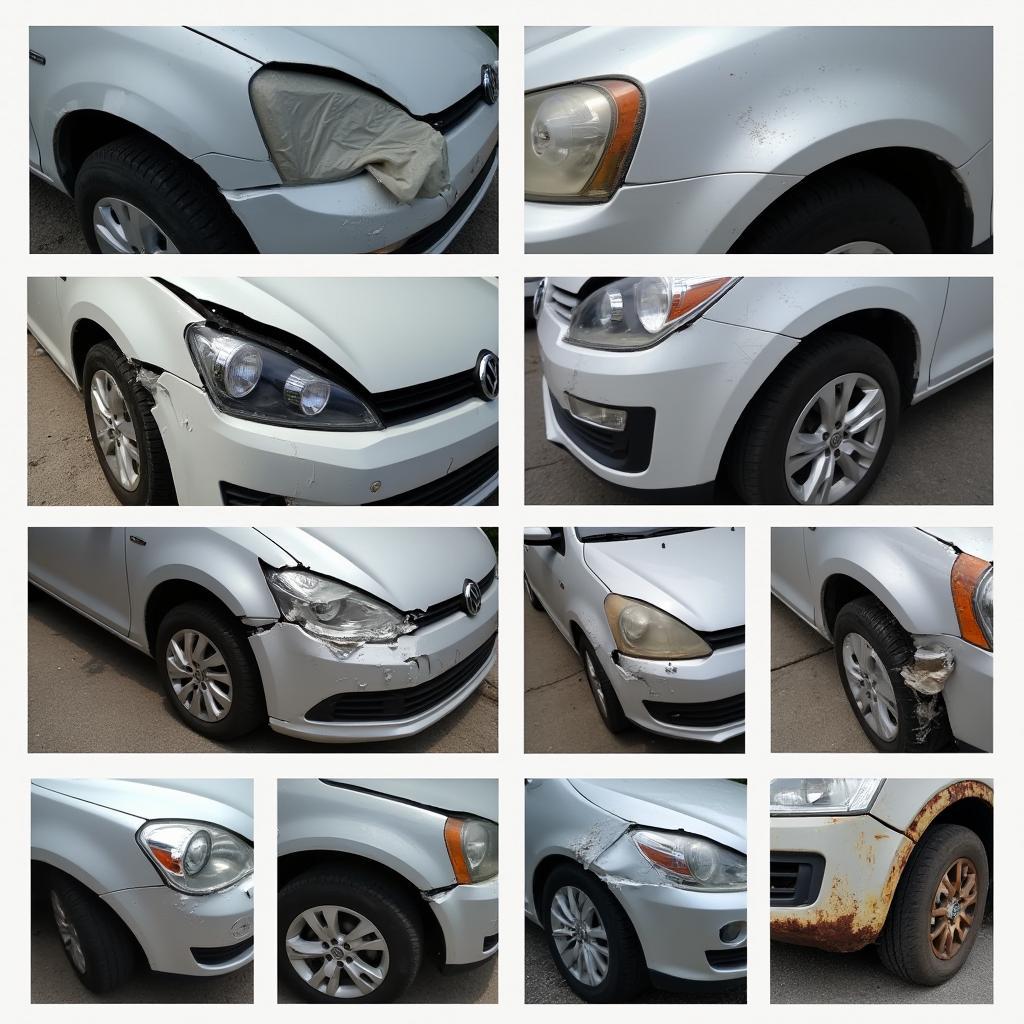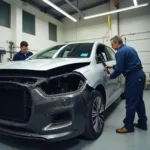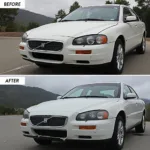Understanding car body & paint repairs is crucial for any car owner, whether you’ve experienced a minor scratch or a major collision. This comprehensive guide delves into the intricacies of restoring your car’s exterior to its former glory.
What are Car Body & Paint Repairs?
Car body & paint repairs encompass a range of services designed to address damage and imperfections affecting your car’s exterior. This includes everything from minor scratches and dents to major collision repairs. The ultimate goal is to restore your vehicle’s structural integrity, safety, and aesthetic appeal.
Types of Car Body Damage
Car body damage varies significantly in severity and type. Common examples include:
- Scratches: Superficial damage to the paintwork.
- Dents: Deformations in the metal body panels.
- Bumper Damage: Impacts to the front or rear bumpers.
- Collision Damage: Extensive damage resulting from accidents.
- Rust: Corrosion of the metal body panels.
The Car Body Repair Process: A Step-by-Step Guide
The car body repair process can be complex, involving multiple stages to ensure a flawless finish:
-
Assessment and Damage Evaluation: Technicians thoroughly inspect the damage to determine the extent of the repairs needed.
-
Repair or Replacement of Damaged Parts: Depending on the severity, damaged parts are either repaired or replaced with OEM (Original Equipment Manufacturer) parts.
-
Bodywork and Shaping: Skilled technicians use specialized tools to hammer out dents, fill in gaps, and restore the body’s original shape.
-
Surface Preparation: The damaged area is sanded, primed, and prepared for painting to create a smooth and even surface.
-
Paint Matching and Application: Expert color matching ensures the new paint seamlessly blends with the existing finish. Multiple coats of paint are applied, followed by a clear coat for protection and shine.
-
Finishing Touches: The repaired area is buffed and polished to a high gloss, leaving your car looking its best.
Car Paint Repair: Restoring Your Car’s Finish
Car paint repair focuses on restoring your car’s paintwork to its original luster. Techniques include:
-
Scratch Removal: Minor scratches can often be buffed out using specialized compounds and polishes.
-
Spot Painting: For deeper scratches or paint chips, a localized paint repair is performed, blending the new paint seamlessly.
-
Panel Painting: If the damage is extensive, an entire panel may need to be repainted.
-
Clear Coat Application: A fresh layer of clear coat protects the base coat and enhances the shine.
Choosing the Right Car Body & Paint Repair Shop
Selecting a reputable and experienced repair shop is crucial for achieving high-quality results. Consider these factors:
-
Reputation and Reviews: Check online reviews and ask for recommendations from trusted sources.
-
Experience and Expertise: Look for a shop specializing in car body & paint repairs with a proven track record.
-
Use of Quality Materials: Ensure the shop uses high-quality paints, primers, and other materials.
-
Warranty: Reputable shops stand behind their work with a warranty on repairs and paintwork.
DIY vs. Professional Car Body & Paint Repairs:
While minor scratches can sometimes be addressed with DIY solutions, professional repairs are always recommended for any significant damage. Professional technicians have the expertise, tools, and experience to ensure a safe and flawless repair.
“Choosing the right car body & paint repair shop can be the difference between a seamless repair and a recurring headache. Don’t underestimate the value of experience and a solid reputation.” – John Miller, Automotive Expert
Cost of Car Body & Paint Repairs:
The cost varies widely depending on the severity of the damage, the type of repairs needed, and the make and model of your car. It’s always best to obtain multiple quotes from reputable shops before proceeding with any repairs.
Maintaining Your Car’s Body and Paint: Tips for Long-Term Protection
-
Regular Washing and Waxing: Frequent washing removes dirt and grime, while waxing provides a protective layer against the elements.
-
Paint Protection Film: Consider applying a transparent film to vulnerable areas like the hood and bumpers to prevent stone chips and scratches.
-
Covered Parking: Whenever possible, park your car in a garage or covered area to shield it from the sun, rain, and other environmental factors.
Conclusion:
Car body & paint repairs are an essential aspect of car ownership, ensuring your vehicle remains safe, visually appealing, and retains its value. By understanding the different types of damage, the repair process, and how to choose a qualified repair shop, you can confidently navigate the world of car body & paint repairs and keep your car looking its best for years to come.
car body work repairs aylesbury
FAQs:
1. How long does a typical car body & paint repair take?
The repair time varies depending on the damage’s extent. Minor repairs might take a few days, while major collision repairs could take several weeks.
2. Will my insurance cover car body & paint repairs?
Coverage depends on your specific insurance policy and the incident’s circumstances. It’s best to contact your insurance provider for clarification.
3. Can I drive my car with minor body damage?
While minor dents or scratches might not affect drivability, it’s essential to address any damage affecting the car’s structural integrity or safety features.
4. What is the difference between OEM and aftermarket parts?
OEM parts are made by the original manufacturer, while aftermarket parts are produced by third-party companies. OEM parts are generally recommended for their quality and compatibility.
5. How can I prevent rust on my car’s body?
Regular washing, waxing, and addressing paint chips promptly can help prevent rust. Consider rustproofing treatments for added protection.
For more information on car body repairs, check out our comprehensive guide on car body repairs bradley stoke.
Need assistance with your car repair needs? Contact us via WhatsApp: +1(641)206-8880 or email us at cardiagtechworkshop@gmail.com. Our dedicated customer support team is available 24/7 to assist you.



